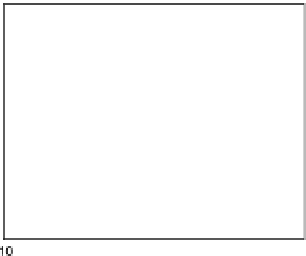Graphics Reference
In-Depth Information
Fig. 4.1
Cross section of the
Airy pattern
A(r)
according
to (
4.1
)
(cf. also Subbarao,
1988
; Chaudhuri and Rajagopalan,
1999
; McCloskey et al.,
2007
; and Namboodiri et al.,
2008
). In (
4.2
), the centre of the PSF is denoted by
(
v
c
)
. The perceived amount of image blur increases with increasing values of
σ
.
In the following,
σ
will be referred to as the 'radius' of the PSF.
u
c
,
ˆ
ˆ
4.2 Reconstruction of Depth from Defocus
The PSF-based depth from defocus method relies on the fact that the image of a
scene point situated at a distance
z
from the camera becomes more and more blurred,
i.e. the PSF radius
σ
increases, with increasing depth offset
(z
−
z
0
)
between the
scene point at distance
z
and the plane at distance
z
0
on which the camera is focused.
4.2.1 Basic Principles
This introductory section first follows the descriptions by Pentland (
1987
), Subbarao
(
1988
), and Chaudhuri and Rajagopalan (
1999
). Accordingly, for an image acquired
by a camera with principal distance
b
, i.e. the distance between the optical centre
and the image plane, and focal length
f
, the depth
z
0
of a perfectly focused scene
point is given by the lens law
1
b
+
1
z
0
=
1
f
(4.3)
(Pedrotti,
1993
). Pentland (
1987
) introduces the concept of the 'blur circle' (also
known as the 'circle of confusion') into the depth from defocus framework. Follow-
ing his derivation, the lens law (
4.3
) yields for the distance
z
0
between the lens and
a scene point imaged without blur the
f)
, where
b
0
is the
distance between the optical centre and the image plane without blur and
f
is the
focal length of the lens (cf. Fig.
4.2
). For a different distance
b
between the optical
centre and the image plane, an object at distance
z
relation
z
0
=
fb
0
/(b
0
−
=
fb/(b
−
f)
appears without












































Search WWH ::

Custom Search